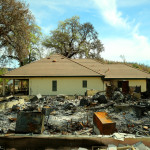President Obama Makes Federal Assistance Available to Individuals
Residents Urged to Follow Instructions from Local Officials
WASHINGTON – The Federal Emergency Management Agency (FEMA) continues to support state and local response efforts to the flooding in Colorado through its National Response Coordination Center in Washington and its Regional Response Coordination Response Center in Denver, Colo.
On Saturday, President Barack Obama declared a major disaster declaration for Boulder County, Colorado. The President’s declaration makes federal assistance available to individuals for temporary housing and home repairs, low-cost loans to cover uninsured property losses, and other programs to help individuals and business owners in their recovery.
“As response efforts continue, FEMA encourages residents in affected areas to stay informed about changing flood conditions and follow the direction of local officials,” said FEMA Administrator Craig Fugate. “Let your friends and family know that you’re safe. Impacted residents in Boulder County can start registering for federal assistance today.”
Individuals and business owners who sustained losses in Boulder County, Colo. can apply for assistance by calling 1-800-621-FEMA (3362). Disaster survivors who have a speech disability or hearing loss and use TTY should call 1-800-462-7585 directly; for those who use 711 or Video Relay Service (VRS), call 1-800-621-3362. Those in the affected area with access to the internet may register by Web-enabled mobile device at m.fema.gov, or online at www.disasterassistance.gov.
The President’s major disaster declaration also makes federal funding available to state and eligible local governments and certain non-profit organizations to support emergency work in Boulder County to save lives, protect property and remove debris.
When natural disasters such as flooding occurs, the first responders are state and local emergency and public works personnel, volunteers, humanitarian organizations, and numerous private interest groups who provide emergency assistance required to protect the public’s health and safety and to meet immediate human needs.
FEMA’s priority is to support local efforts to keep residents and communities safe. FEMA has two Incident Management Assistance Teams (IMATs) and a liaison officer on site at the Colorado emergency operations center to coordinate with state and local officials to identify needs and shortfalls impacting disaster response. Three federal urban search and rescue teams, Colorado Task Force 1, activated by the state, Utah Task Force 1 and Nebraska Task Force 1, are on the ground to support search and rescue operations in hard hit areas. Two additional federal urban search and rescue teams, Nevada Task Force 1 and Missouri Task Force 1, are en route to Colorado.
FEMA proactively staged commodities closer to the hardest hit areas and areas potentially affected by the severe weather and flooding. More than 65,000 liters of water, 50,000 meals and other supplies have been delivered to Incident Support Bases established by FEMA. These resources are being provided to the state as needed and requested. A FEMA Incident Response Vehicle is in Colorado providing communications support to the emergency operations center for the town of Lyons. FEMA has identified additional teams and personnel to support the state should they be needed and requested.
On Thursday, September 12, President Barack Obama declared an emergency for three counties in Colorado, and ordered federal aid to supplement state and local response efforts. The declaration made direct federal assistance support immediately available to save lives and to protect property and public health and safety in areas of Colorado, including Boulder, El Paso and Larimer counties, affected by the severe storms, flooding, landslides and mudslides.
We urge residents to continue to monitor weather conditions, and those in impacted areas to listen carefully to instructions from their local officials and take recommended protective measures to safeguard life and property while response efforts continue. According to the National Weather Service, the official source for severe weather watches and warnings, flooding advisories remain in effect for several areas in Colorado, and severe weather remains in the forecast through the weekend in some areas.
Here are a few safety tips to help keep you safe during flooding:
- Turn Around, Don’t Drown. Avoid flooded areas.
- Give first responders space to do their work by following local public safety instructions.
- Return home only when authorities indicate it is safe.
- Roads may still be closed because they have been damaged or covered by water. Barricades have been placed for your protection. If you come upon a barricade or flooded road, turn around, don’t drown. Go another way.
Those in areas with the potential to be affected by flooding should familiarize themselves with the terms that are used to identify a flood hazard and discuss what to do if a flood watch or warning is issued:
- Flood Watch: Flooding is possible. Tune in to NOAA Weather Radio, commercial radio, or television for information.
- Flood Warning: Flooding is occurring or will occur soon; if local officials give notice to evacuate, do so immediately.
- Flash Flood Watch: Flash flooding is possible. Be prepared to move to higher ground; monitor NOAA Weather Radio, commercial radio, or television for information.
- Flash Flood Warning: A flash flood is occurring; seek higher ground on foot immediately.
Wireless Emergency Alerts (WEAs) are now being sent directly to many cell phones on participating wireless carriers’ networks. WEAs sent by public safety officials such as the National Weather Service are designed to get your attention and to provide brief, critical instructions to warn about imminent threats like severe weather. Take the alert seriously and follow instructions. More information is available on WEA at www.ready.gov/alerts.
For more information and flood preparedness tips, please visit: www.ready.gov or www.listo.gov to find out how you can prepare your family for flooding and other disasters.




